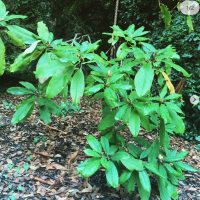Monitoring Weekend
The weekend of July 12th – 14th found 15 Rare Care volunteers and assorted partners on Table Mountain in the Cle Elum Ranger District for the annual Monitoring Weekend. We conducted 21 surveys and successfully located the target plant on 16 of them, with all of the teams participating in at least one success and one new discovery. Thank you to all of our fabulous volunteers!
Read moreNotes from the Field
It is nearing the end of my summer internship with Rare Care, stationed at Mount Rainier National Park, and I am excited to share what we found! The internship opportunity sprung from a collaboration between Rare Care and the National Park Service to confirm and improve the accuracy of rare plant records within Mount Rainier National Park’s boundaries. For the Park Service, this work will provide vital spatial information about rare plants to inform management decisions.
Read moreThe Weekly Dirt 09.25.24
09.25.24
Around The Farm
The Farm as a Classroom
by Dylan Hancock, UW Farm Work-Study Student Staff, majoring in Education, MEd Candidate UW, ’25
My name is Dylan Hancock and I am a Masters in Education Candidate at the University of Washington. In early July 2024, I also began as a work study student at the UW Farm. My responsibilities exist on and off the farm.
Read moreThe Weekly Dirt 09.18.24
09.18.24
Around The Farm
Why Rye?
UW Farm Grows Cereal Grains Modeling Biodiversity
by Aisling Doyle-Wade, UW Farm Production Manager, CEP Alumni ’21
Today marks the last pick-up for our Summer and Peak season CSA shareholders.
Our Full season shareholders have another two months of veggie boxes to look forward. While the next eight weeks of boxes will be choked full of fall favorites such as onions, potatoes and winter squash, today, we wanted to send off our Summer and Peak shareholders with a special fall treat – UW Farm Grown 100% whole wheat rye flour!
The Weekly Dirt 09.11.24
09.11.24
Around The Farm
Introducing Erica, the new UW Farm Americorps Volunteer
by Erica Fong, 2024-25 Americorps Education and Outreach Lead at the UW Farm
My name is Erica Fong and I’m so excited to be joining the UW Farm as the new Americorps Education and Outreach Lead for the 2024-25 school year!
Primarily, my role will be supporting urban farming and food systems education activities.
The Weekly Dirt 09.04.24
09.04.24
Around The Farm
Tomato Growing at the 47th Parallel
By Perry Acworth, UW Farm Manager
Off the vine, juicy, ripe tomatoes are my favorite crop to grow and savor. Hands down. As a child, however, I was not a fan. To my younger self, they tasted mealy, lacked flavor and were tough-skinned. It wasn’t until 1990, fresh out of college, that I grew my first tomatoes in the backyard of an old rented farmhouse in Vermont – the bright red ‘sweet million’ cherry tomato.
The Weekly Dirt 08.28.24
08.28.24
Around The Farm
Hive Hiccups: Swarming Explained
By Mara Tarino, UW Farm Beekeeping Intern, Majoring in Environmental Science & Terrestrial Resource Management, School of Environmental and Forest Sciences, College of the Environment
As a new beekeeper at the UW Farm, I’ve discovered that maintaining a happy and healthy hive involves a lot more than I initially thought. I used to believe that beekeeping was straightforward, with bees managing themselves and providing us with the delicious honey we love.
The Weekly Dirt 08.21.24
08.21.24
Around The Farm
Farm ‘Fits
By Zereen Gesmudo, UW Farm Nutrition Education Intern, Majoring in Art:3D4M in the College of Arts and Science & Nutrition Minor in the School of Public Health
Of all of the exciting new things that I learned at the farm, from how to properly harvest peas to pruning tomatoes, the one thing that always stuck out to me is ensuring I have functional and weather-appropriate clothing for farm work.
The Weekly Dirt 08.14.24
08.14.24
Around The Farm
The State of The Hive
By Amaya Saunders, UW Farm Beekeeping Intern, Majoring in Linguistics, College of Arts and Sciences
As we edge towards the end of summer, the bees have wrapped up their busiest pollinating season, meaning it’s time for honey! Weighing hives is an important part of beekeeping – it helps estimate the activity of the hive without disturbing the bees.
August Staff Profile: Ron Schmaltz

Meet our August Staff Feature – Ron Schmaltz! Ron is the horticulturalist in charge of one of the Washington Park Arboretum’s signature collections: Rhododendron Glen. Ron spent almost 30 years as an IT software developer before pivoting to horticulture. After returning to school at the Edmonds College, Ron started as an intern at the Arboretum in 2017 and, before too long, was working as an official gardener and caring for the 4 acres that make up the Glen.
Read more